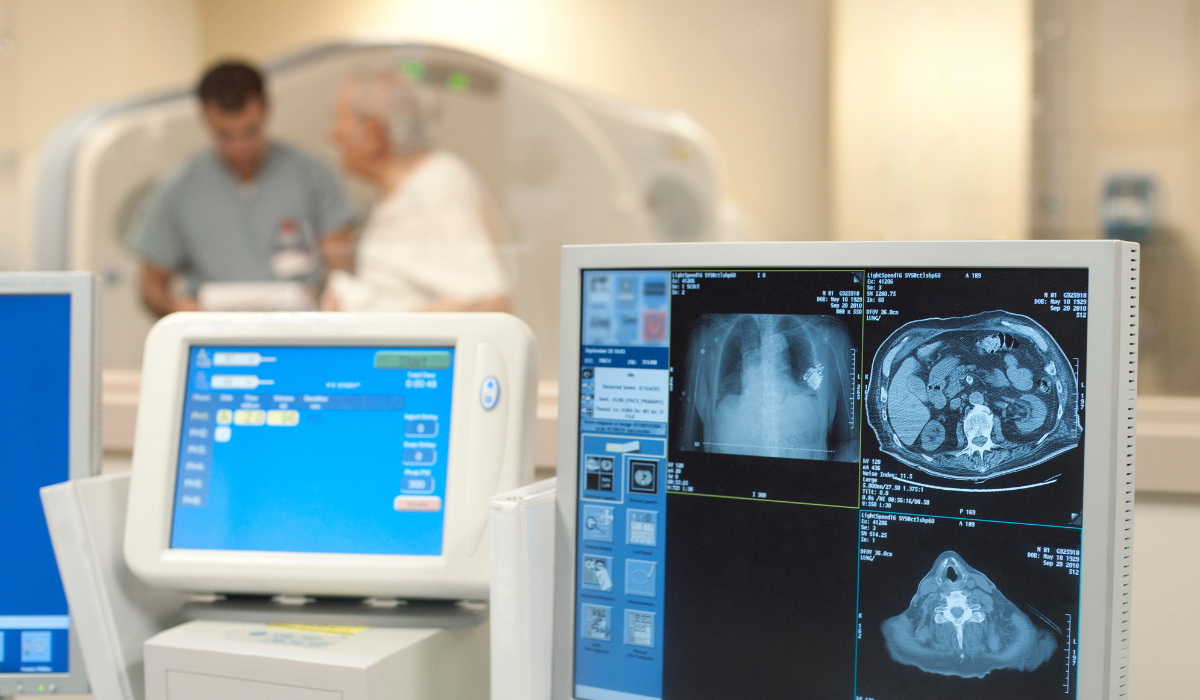
Biomedical imaging is the process of creating pictures of what’s inside the human body. Information security is designed to keep those images safe. If you work in biomedical imaging and information security, you act as a bodyguard for patient data, specifically medical images like MRIs, X-rays, and CT scans. These images include confidential information including patient names, birth dates, diagnoses, and diseases. As a patient, you wouldn’t want any of that info to fall into the wrong hands! That’s why in information security for biomedical imaging, your job is to ensure that medical devices and equipment are compliant with federal and state laws. You educate staff members on the importance of keeping devices secure and identify potential cybersecurity threats that could negatively impact your devices, data, and delivery of care. Some of your important responsibilities include:
Confirm Equipment and Systems Compliance
For multiple reasons, medical equipment and systems must remain compliant. Adhering to minimum standards makes sure that biomedical imaging equipment functions the way it was intended, helping to accurately diagnose and treat patients based on reliable information. You also need to ensure that patient information adheres to security regulations, such as HIPAA, to prevent unauthorized access to sensitive information and identity theft. Proper compliance ensures that systems can communicate and share necessary information, leading to better healthcare coordination. And obeying compliance standards ensures that medical equipment works like it’s supposed to in emergency situations such as natural disasters or pandemics.
Ensure Data Integrity and Encryption
Keeping data safe is at the heart of what you do in information security. That means using a variety of techniques to make sure patient information is protected wherever it is, whether at rest, in use, or in transit. Encryption is one way to make sure that when information travels, if it’s somehow intercepted, it is not easily deciphered. HIPAA also has rules on how to handle, protect, and transport health information. And it limits what can be shared with whom.
Control Who Accesses Medical Devices
Not everyone needs full access or any access at all to medical devices. To protect patient data, you control who has access to it, and what type of access they have. For example, some users may only need to view the data while others may need edit permissions. Other employees, such as medical billers and coders, may require full access to patient data to carry out their duties. To limit access, you set up authorization mechanisms and password protections, including two-factor authentication for heightened security protocols.
Monitor Devices for Potential Threats
You must keep a constant watch over medical equipment and devices and ensure they’re protected at all times. To do so, you assist your IT team with the setup of important security features such as firewalls and anti-virus software. You test your security system for weaknesses and monitor for potential risks and threats. When necessary, you update software or apply patches to fix vulnerabilities. If an attack does occur, you work to identify the source of the attack, how and when it occurred, and what you can do to prevent similar threats in the future.
Conduct Audits
Even the best plans and processes for information security can miss the mark. To make sure you don’t miss anything, it’s critical to conduct regular security audits. You’ll have a long list of items to check, including:
- Physical security of equipment Equipment, systems, and network weaknesses
- Undetected incidents
- Data classification
- Log management
- Security patch management
- User training
- Third-party vendor authorizations
- Access controls, permissions, and privileges
- Data backup and recovery plans
- Security policies and procedures
- Documentation and reporting
The goal of your checklist is to provide a comprehensive assessment of your organization’s security to keep patients and their data safe and secure.
Educate Staff on Cybersecurity
All staff are responsible for medical device security, not just the IT team. But the medical staff may not be aware of the role they play in data protection. One of your responsibilities is to educate them on the importance of cybersecurity. You might need to show biomedical and imaging staff how to securely connect to the network or explain the basics of IT security. You also teach them what suspicious activity might look like on the devices they manage and how they can report it to your team.
If you’re already working in healthcare IT and want to learn more about biomedical and imaging security, contact Charter Career Academy today. We offer an affordable training program in Biomedical and Imaging Information Security that can teach you how to keep medical devices safe from cybercriminals. The program can be completed in as few as six weeks and is offered online for flexibility and convenience. Fill out the form to learn more.